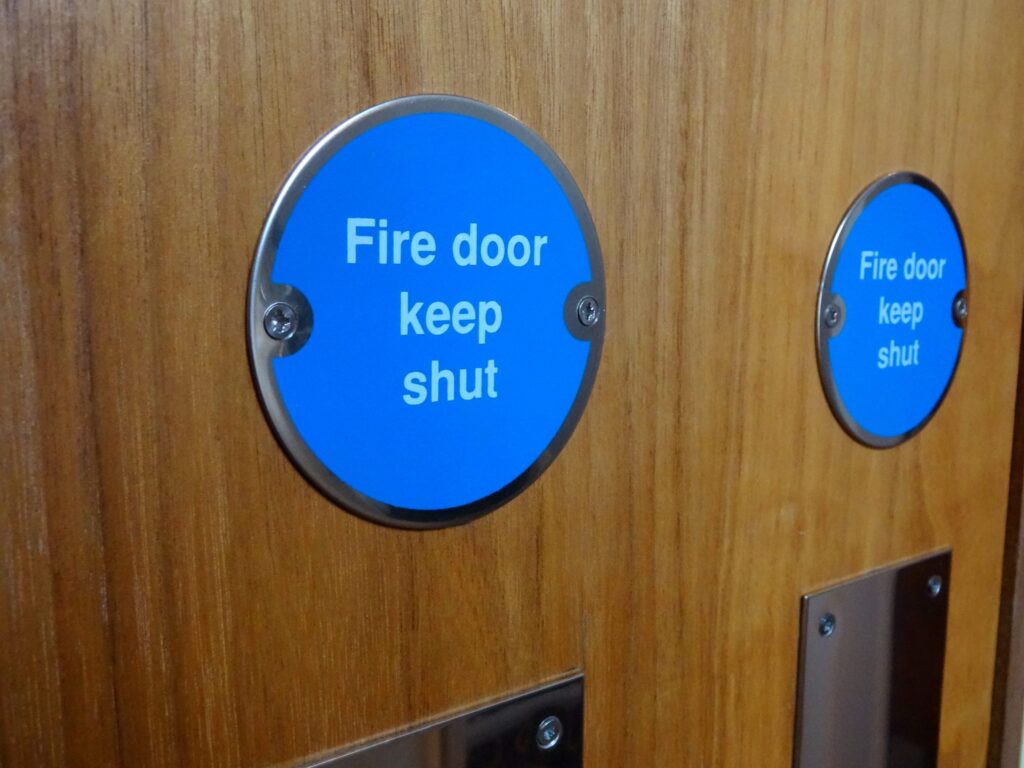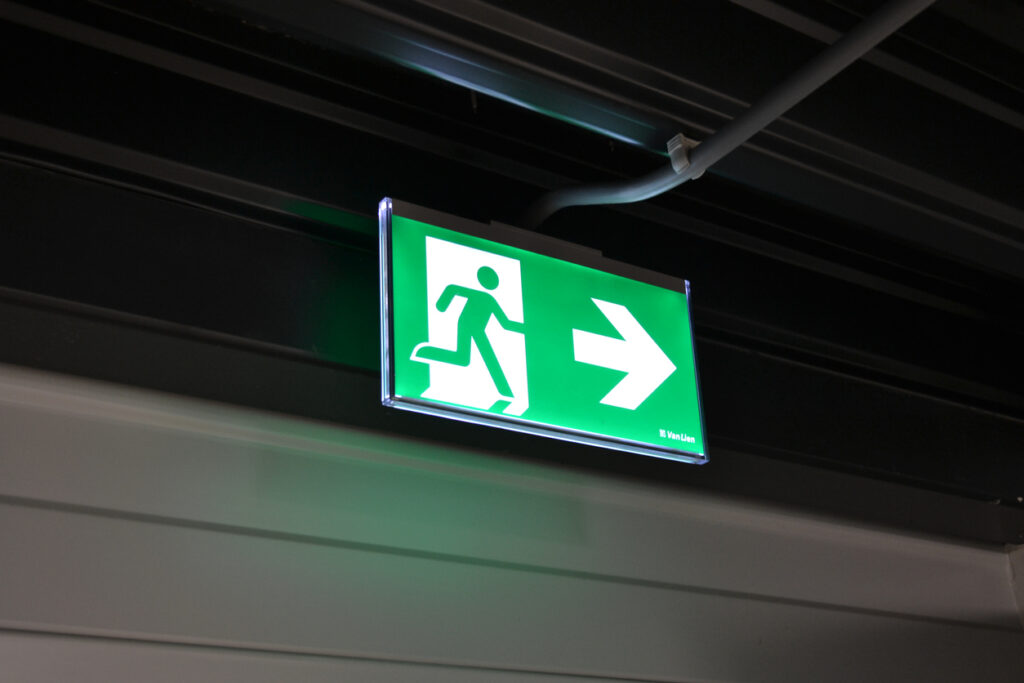Why Are Fire Doors So Important in an Emergency?
Fire doors are an absolutely fundamental part of any building’s passive fire protection strategy, so it’s vital that you understand how they work properly. In this article, we’ll be covering how fire doors work, how they fit into a wider passive fire protection strategy and why they are so important.

What is a fire door?
Essentially, a fire door is installed to help stop the spread of flames and smoke in the event of a fire. In order to meet BS 476-22 standards, a fire door must have several different features, including:
- Self-closing mechanism: In order to ensure that the door is always closed in the event of a fire, every fire door must be fitted with a self-closing mechanism. If a fire door isn’t shut when a fire breaks out, it’s completely useless.
- Smoke seals: Given that the main role of a fire door is to stop the spread of smoke, smoke seals must be fitted to every door to ensure that no smoke can pass through into the room or corridor beyond.
- Fire-resistant materials: In order to be relied upon as a part of your passive fire defense strategy, fire doors need to be constructed using fire-resistant materials, such as fire-resistant glazing. The materials required for each door will depend on the intended rating the door will have, for example: FD30, FD60, FD90 or FD120. The numerical value there simply stands for the number of minutes that the door should be able to resist a fire for.
When it comes to the fire resistance rating that each door has, it’s important to understand that each door is tested under controlled circumstances using a furnace test and time-temperature curve. Under real circumstances during an actual fire, an FD60 fire door may not be able to withstand the fire for the full hour, or the door might not fail at all. This will all depend on the nature of the fire.
Compartmentalisation
Fire doors are designed in such a way that they can stop a fire spreading through the door, but in order to properly keep a fire restricted to its room or area of origin, a fire door must fit into a wider fire strategy of compartmentalisation.
Here are the two key aims of a fire compartmentalisation strategy:
- More escape time: One of the reasons why compartmentalisation is so important is because it gives occupants more time to identify and utilise the correct fire escape route and get to safety. It’s for this reason why fire doors are absolutely essential in corridors which may be used for escape in the event of a fire.
- Minimise damage to the building: If a fire can be kept to the room or rooms in which it originated, this could potentially save the owner millions of pounds in repairs.

Installation
In order for a fire door to perform properly, it not only needs to meet BS 476-22 standards, it also needs to be installed to BS 8214. If your fire door is improperly installed, the seals may not line up properly with the floor, rendering them useless.
Here at Pyrotec, we’re able to fit both single and double fire doors in line with BS 8214, so you can rest assured that you will be fully protected in the event of a fire.
At Pyrotec, we specialise in commercial fire safety for all types of businesses across Brighton, Eastbourne and Crawley. We are fully accredited suppliers and installers of high-quality fire doors, so get advice from our accredited engineers today on the type of fire door that would best suit your strategy.

